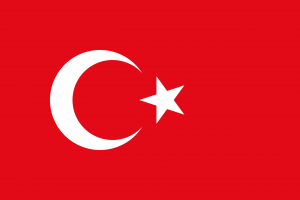Language/Turkish/Grammar/Gender
Hi Turkish learners! 😊
In this lesson, we will focus on the gender aspect of the Turkish language. As you may already know, Turkish is a gender-neutral language, which means that there is no distinction between male or female nouns. However, there are some situations where you need to differentiate based on gender, such as personal pronouns and possessive suffixes.
With the completion of this lesson, consider investigating these related pages: Count from 1 to 10 & The Dative Case in Turkish.
Personal Pronouns[edit | edit source]
In Turkish, personal pronouns do not have gender. The same pronoun is used for both he and she. The pronoun used in Turkish is o.
Examples[edit | edit source]
| Turkish | Pronunciation | English | |||
|---|---|---|---|---|---|
| O adam | o adam | That person (He/She is a man) | O kadın | o kadın | That person (He/She is a woman) |
As you can see from the example above, the pronoun "o" is used to refer to both a man and a woman.
Possessive Suffixes[edit | edit source]
Whenever there is a possessive relationship, the gender issue arises. If the possessive is used with a singular noun, it is gender-neutral, but if it is used with a plural noun, you need to choose the appropriate gender.
Examples[edit | edit source]
| Turkish | Pronunciation | English | |||
|---|---|---|---|---|---|
| evi | evi | His/Her house (singular) | evleri | evleri | His/Her houses (plural) |
In the first example, the possessive suffix "-i" is used with the singular noun "ev" which means house. Note that the suffix "-i" does not have any gender specification. In the second example, the possessive suffix "-leri" is used with the plural noun "evler" which again means houses. The suffix "-leri" specifies that the possession belongs to a group of people, but it does not specify any gender.
Culture Tips[edit | edit source]
Turkish culture is very diverse and rich. Here are some interesting cultural facts that you may find useful in your Turkish language studies:
- Turkish cuisine is one of the three great cuisines of the world, alongside French and Chinese cuisine. Turkish cuisine has been influenced by many cultures throughout its history, such as Iranian, Arabic, and Greek.
- One of the most famous Turkish symbols is the Turkish evil eye. It is believed that the evil eye protects people from negative energy and brings good luck. You can find many souvenirs and accessories with the evil eye symbol all around Turkey.
- The tradition of Turkish tea goes back centuries. Tea is consumed throughout the day and it is offered to guests as a sign of hospitality. Tea is usually served in small, clear glasses called "çay bardağı". To prepare it, tea is brewed in special teapots called "çaydanlık".
Dialogue[edit | edit source]
To help you understand the usage of personal pronouns, let's see a dialogue between two friends:
- Ali: Nereli? (Where are you from?)
- Ayşe: İstanbul'lu. Ya sen? (I'm from Istanbul. How about you?)
- Ali: Ben de İstanbul'lu'yum. (I'm also from Istanbul)
- Ayşe: Çok iyi. (Good)
Conclusion[edit | edit source]
In conclusion, Turkish is a gender-neutral language, but there are some specific situations where the gender issue arises. By using the possessive suffixes and personal pronouns correctly, you can avoid any gender-related confusion in your conversations. To improve your Turkish Grammar, you can also use the Polyglot Club website. Find native speakers and ask them any questions!
Sources[edit | edit source]
Excellent job on conquering this lesson! Consider delving into these related pages: How to Use be & Pronouns.
Other Lessons[edit | edit source]
- REİTERATİVE
- Prepositions
- How to Use Be
- How to use ¨to be¨ with adjectives in Turkish
- Present Tense
- Greetings in Turkish
- SIFATLARDA KÜÇÜLTME
- Definite Articles in Turkish
- How to use ¨can¨ in Turkish
- Future Tense

